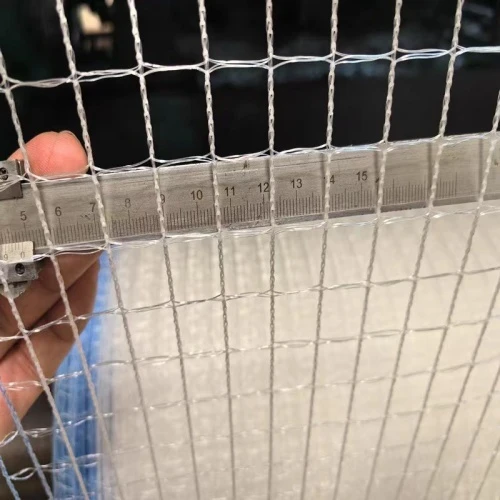-
 Afrikaans
Afrikaans -
 Albanian
Albanian -
 Amharic
Amharic -
 Arabic
Arabic -
 Armenian
Armenian -
 Azerbaijani
Azerbaijani -
 Basque
Basque -
 Belarusian
Belarusian -
 Bengali
Bengali -
 Bosnian
Bosnian -
 Bulgarian
Bulgarian -
 Catalan
Catalan -
 Cebuano
Cebuano -
 China
China -
 Corsican
Corsican -
 Croatian
Croatian -
 Czech
Czech -
 Danish
Danish -
 Dutch
Dutch -
 English
English -
 Esperanto
Esperanto -
 Estonian
Estonian -
 Finnish
Finnish -
 French
French -
 Frisian
Frisian -
 Galician
Galician -
 Georgian
Georgian -
 German
German -
 Greek
Greek -
 Gujarati
Gujarati -
 Haitian Creole
Haitian Creole -
 hausa
hausa -
 hawaiian
hawaiian -
 Hebrew
Hebrew -
 Hindi
Hindi -
 Miao
Miao -
 Hungarian
Hungarian -
 Icelandic
Icelandic -
 igbo
igbo -
 Indonesian
Indonesian -
 irish
irish -
 Italian
Italian -
 Japanese
Japanese -
 Javanese
Javanese -
 Kannada
Kannada -
 kazakh
kazakh -
 Khmer
Khmer -
 Rwandese
Rwandese -
 Korean
Korean -
 Kurdish
Kurdish -
 Kyrgyz
Kyrgyz -
 Lao
Lao -
 Latin
Latin -
 Latvian
Latvian -
 Lithuanian
Lithuanian -
 Luxembourgish
Luxembourgish -
 Macedonian
Macedonian -
 Malgashi
Malgashi -
 Malay
Malay -
 Malayalam
Malayalam -
 Maltese
Maltese -
 Maori
Maori -
 Marathi
Marathi -
 Mongolian
Mongolian -
 Myanmar
Myanmar -
 Nepali
Nepali -
 Norwegian
Norwegian -
 Norwegian
Norwegian -
 Occitan
Occitan -
 Pashto
Pashto -
 Persian
Persian -
 Polish
Polish -
 Portuguese
Portuguese -
 Punjabi
Punjabi -
 Romanian
Romanian -
 Russian
Russian -
 Samoan
Samoan -
 Scottish Gaelic
Scottish Gaelic -
 Serbian
Serbian -
 Sesotho
Sesotho -
 Shona
Shona -
 Sindhi
Sindhi -
 Sinhala
Sinhala -
 Slovak
Slovak -
 Slovenian
Slovenian -
 Somali
Somali -
 Spanish
Spanish -
 Sundanese
Sundanese -
 Swahili
Swahili -
 Swedish
Swedish -
 Tagalog
Tagalog -
 Tajik
Tajik -
 Tamil
Tamil -
 Tatar
Tatar -
 Telugu
Telugu -
 Thai
Thai -
 Turkish
Turkish -
 Turkmen
Turkmen -
 Ukrainian
Ukrainian -
 Urdu
Urdu -
 Uighur
Uighur -
 Uzbek
Uzbek -
 Vietnamese
Vietnamese -
 Welsh
Welsh -
 Bantu
Bantu -
 Yiddish
Yiddish -
 Yoruba
Yoruba -
 Zulu
Zulu
Innovative Techniques for Efficient Fish Breeding and Sustainable Aquaculture Practices
Exploring Fish Breeding Nets A Key to Sustainable Aquaculture
Aquaculture, the farming of aquatic organisms such as fish, crustaceans, and mollusks, has emerged as a critical component in meeting the global demand for seafood. As the world’s population continues to grow, the pressure on wild fish populations intensifies, making sustainable practices essential for the industry. One significant innovation that has transformed fish farming is the use of breeding nets. These nets offer a solution to various challenges associated with traditional aquaculture methods, promoting both efficiency and sustainability.
Fish breeding nets are specially designed enclosures used to rear fish in controlled environments. They can be used in freshwater bodies, like lakes and ponds, or in marine settings such as coastal areas and open seas. The nets are typically made of durable, non-toxic materials that allow water circulation while preventing fish from escaping or predators from accessing the stocked fish.
One of the primary benefits of using fish breeding nets is the ability to control the breeding process. By managing the environment in which fish spawn, farmers can optimize conditions for egg fertilization and hatching. This increased efficiency leads to higher survival rates for fry (young fish), which is a significant improvement over traditional open-water breeding methods. With controlled breeding, aquaculture producers can select for desirable traits such as fast growth rates, disease resistance, and superior feed conversion efficiency.
Environmentally, fish breeding nets help reduce the impact of fish farming on surrounding ecosystems. Traditional aquaculture can lead to problems such as over-fishing, habitat destruction, and nutrient pollution. By confining breeding and rearing activities within nets, fish farmers can minimize these risks. The controlled environment allows for better management of waste products, as waste can be collected and utilized, for instance, in fertilizers or biogas production, rather than being released into natural waters.
fish breeding net

Additionally, the use of breeding nets promotes biosecurity. Diseases can spread quickly through wild fish populations, which can threaten the health of farmed fish. By isolating breeding populations within nets, farmers can implement stricter biosecurity measures to prevent the introduction and spread of pathogens. Regular health monitoring and the use of vaccines can further protect the fish stock, ensuring healthier populations and consistent production.
From an economic perspective, fish breeding nets enhance the viability of aquaculture operations. They allow for year-round production cycles, independent of seasonal variations in wild fish populations. This accessibility to a steady supply of fish contributes to price stability in the market, benefiting both producers and consumers. Furthermore, the ability to stock and harvest fish in a controlled manner increases overall yield, improving the profitability of fish farming ventures.
Despite the numerous advantages, the implementation of fish breeding nets does come with challenges. Farmers need to be educated in best practices for net management, fish health, and environmental sustainability. Additionally, the initial investment in high-quality nets and associated infrastructure can be substantial. However, the long-term benefits of adopting this technology can outweigh the costs, leading to a more sustainable and productive aquaculture sector.
In conclusion, fish breeding nets represent a significant advancement in aquaculture practices. They offer a strategic approach to breeding and rearing fish that improves sustainability, enhances fish health, and boosts the economic viability of fish farming operations. As the global demand for seafood continues to rise, embracing innovations like fish breeding nets will be crucial in building a sustainable future for the aquaculture industry.
-
Shipping Plastic Bags for Every NeedNewsJul.24,2025
-
Safety Netting: Your Shield in ConstructionNewsJul.24,2025
-
Plastic Mesh Netting for Everyday UseNewsJul.24,2025
-
Nylon Netting for Every UseNewsJul.24,2025
-
Mesh Breeder Box for Fish TanksNewsJul.24,2025
-
Expanded Steel Mesh Offers Durable VersatilityNewsJul.24,2025











